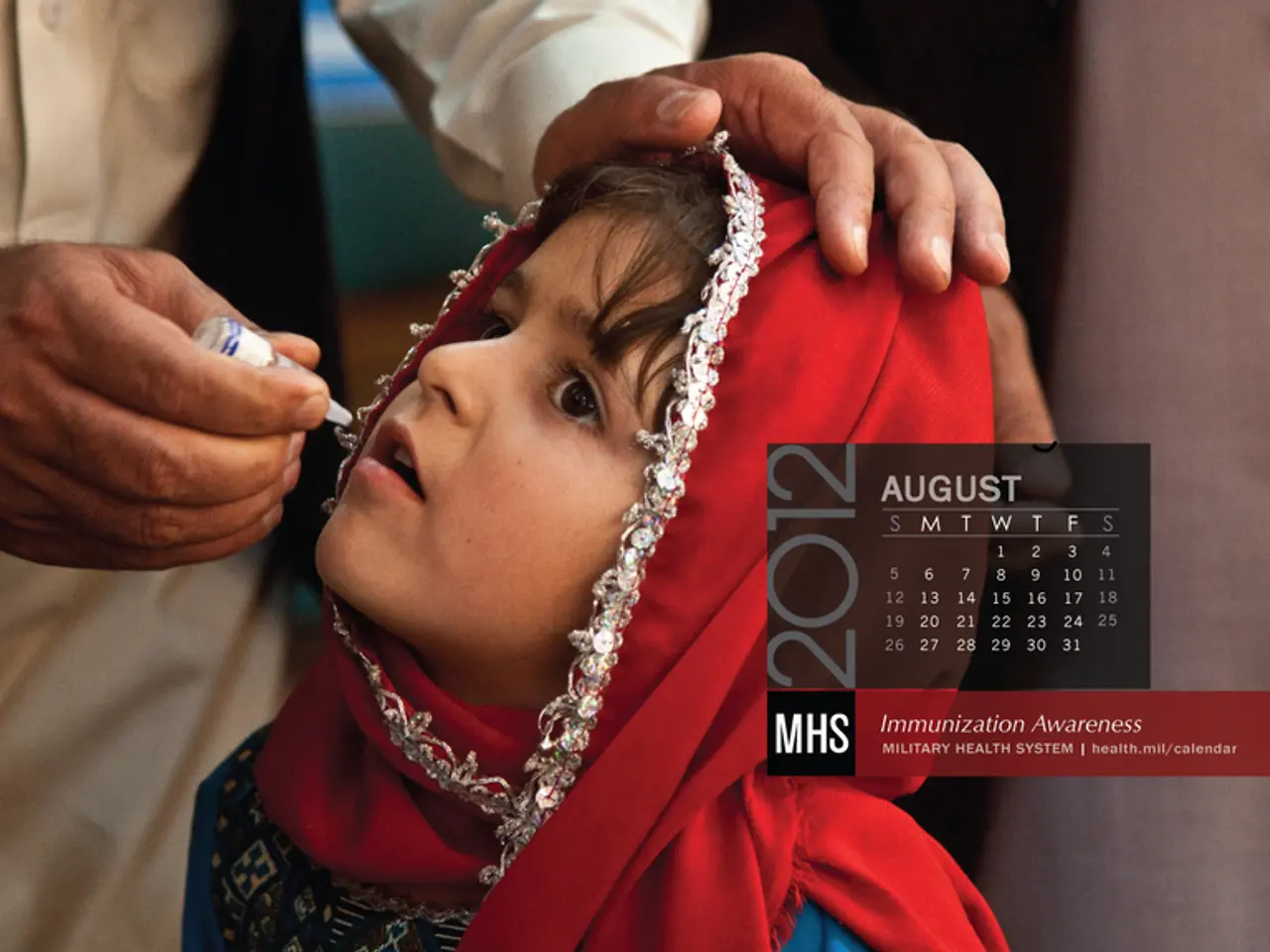Herpes prevalence: debunking popular myths, providing factual information, and presenting statistical data
Global Prevalence of Oral and Genital Herpes: A Comprehensive Overview
Herpes simplex viruses (HSV-1 and HSV-2) are common infections worldwide, affecting a significant portion of the global population. The prevalence of these viruses varies by age group, geographical location, and virus type.
HSV-1, primarily associated with oral herpes, has a staggering global prevalence among individuals under the age of 50, with approximately 3.7 billion people infected worldwide. In the United States, HSV-1 prevalence among adults ranges from 57% to 80%, while in Asia, about 75% of adults carry the virus. Interestingly, HSV-1 is becoming an increasing cause of genital herpes in young adults, accounting for up to 42% of first genital herpes cases in young adult heterosexual women and 76% in young men who have sex with men in some populations.
On the other hand, HSV-2, primarily linked with genital herpes, affects nearly 491 million people aged 15-49 years globally. In the US, HSV-2 seroprevalence in people aged 14-49 years is around 11.9%. Prevalence is higher among women and transgender women and increases with age within the 15-49 age range, reflecting cumulative sexual exposure. HSV-2 is also more common among individuals with HIV infection.
Younger individuals, typically those aged 14-24 years, tend to have lower HSV-2 prevalence initially but show rising rates as they age into adulthood due to increased sexual exposure. Adults aged 25-49 years often have the highest prevalence rates of HSV-2. HSV-1 infections, however, are usually acquired in childhood or adolescence through non-sexual contact, leading to high seroprevalence in younger age groups and adults.
Some key points to note are that HSV-1 has extremely high global prevalence, mostly oral herpes, often acquired early in life. HSV-2 prevalence is lower but still very common worldwide, primarily affecting sexually active adults aged 15-49. Seroprevalence varies significantly by region, sex, and risk behaviors. Many carriers are asymptomatic and unaware of their infection, enabling ongoing transmission even without visible outbreaks.
According to the World Health Organization (WHO), only about 30% of people who have HSV-2 report receiving a diagnosis of genital herpes. HSV-2 is more common in women, affecting 267 million women and 150 million men in 2012, according to the WHO. Herpes can spread through contact with the skin or saliva of a person who has the infection, not just through sexual contact. The virus is most contagious when a person has symptoms, but it can still spread when no symptoms are present. Older herpes infections are less contagious than newer ones.
Dental dams can reduce the risk of spread during oral sex, while more than 500,000 people ages 14-49 have genital herpes in the United States, according to the Centers for Disease Control and Prevention (CDC). Antiviral medications can help control the severity and frequency of outbreaks.
HSV-1 often spreads through nonsexual contact, such as receiving a kiss from a family member, according to the CDC. Genital herpes spreads through sexual contact. Most people who have oral or genital herpes do not have any symptoms, according to the CDC. Globally, about 67% of people below the age of 50 have HSV-1, which most often causes oral herpes, according to the CDC.
The likelihood of spreading genital herpes depends on the frequency of sex, use of barrier method contraception, and the duration of the infection. HSV-2 is primarily a sexually transmitted infection, according to the WHO. Oral herpes can be transmitted through nonsexual contact, such as kissing or sharing utensils or drinks.
Pregnant women should speak with a healthcare professional about preventing genital herpes to reduce the risk of passing it to the baby. People can spread herpes to others at any time, including when they do not have any symptoms. About 417 million people aged 15-49 years have HSV-2, which usually causes genital herpes, according to the CDC. People with herpes infection do not have a cure, the virus remains in the body for life. Herpes can cause serious complications, such as increasing the likelihood of contracting HIV and causing neonatal herpes in infants.
- Hepatitis, a medical-condition, is not associated with oral or genital herpes, but it can cause serious complications and is a significant health concern worldwide.
- Alzheimers, a neurodegenerative disease, is not predictive of oral or genital herpes, but it is a major health concern, particularly in the elderly population.
- Psoriatic arthritis and ankylosing spondylitis, two types of arthritis, are not related to oral or genital herpes, but they are skin-conditions and health-and-wellness issues that affect many individuals.
- Asthma, a common respiratory disease, is not linked with oral or genital herpes, but it is a chronic health-and-wellness concern that can cause symptoms such as wheezing and shortness of breath.
- Obesity, a global health crisis, is not related to oral or genital herpes, but it increases the risk of various other health-and-wellness problems, including diabetes and heart disease.
- Sexual health is important to discuss when discussing oral and genital herpes, as the viruses can spread through sexual contact, and over 500,000 people in the US alone have genital herpes, according to the CDC.
- Atopic dermatitis, a type of skin-condition, is not directly related to oral or genital herpes, but it can co-exist with other skin-conditions, such as warts and cancerous growths.
- Breast cancer, a deadly form of cancer, is not associated with oral or genital herpes, but it is a critical women's health issue that requires regular screenings and early detection methods.
- Depression, a mental health condition, is not connected with oral or genital herpes, but it can impact sexual-health and overall quality of life.
- Oral and genital herpes infections can be especially challenging for individuals with other medical-conditions, such as HIV, as they can exacerbate existing health issues and increase the risk of complications.
- Herpes is not the only skin-condition causes by viruses; warts are also common, often affecting children and young adults.
- Science and medical research are crucial for understanding the predictive elements of different medical-conditions, such as the relationship between oral herpes and an increased risk of developing Alzheimers in later life.




